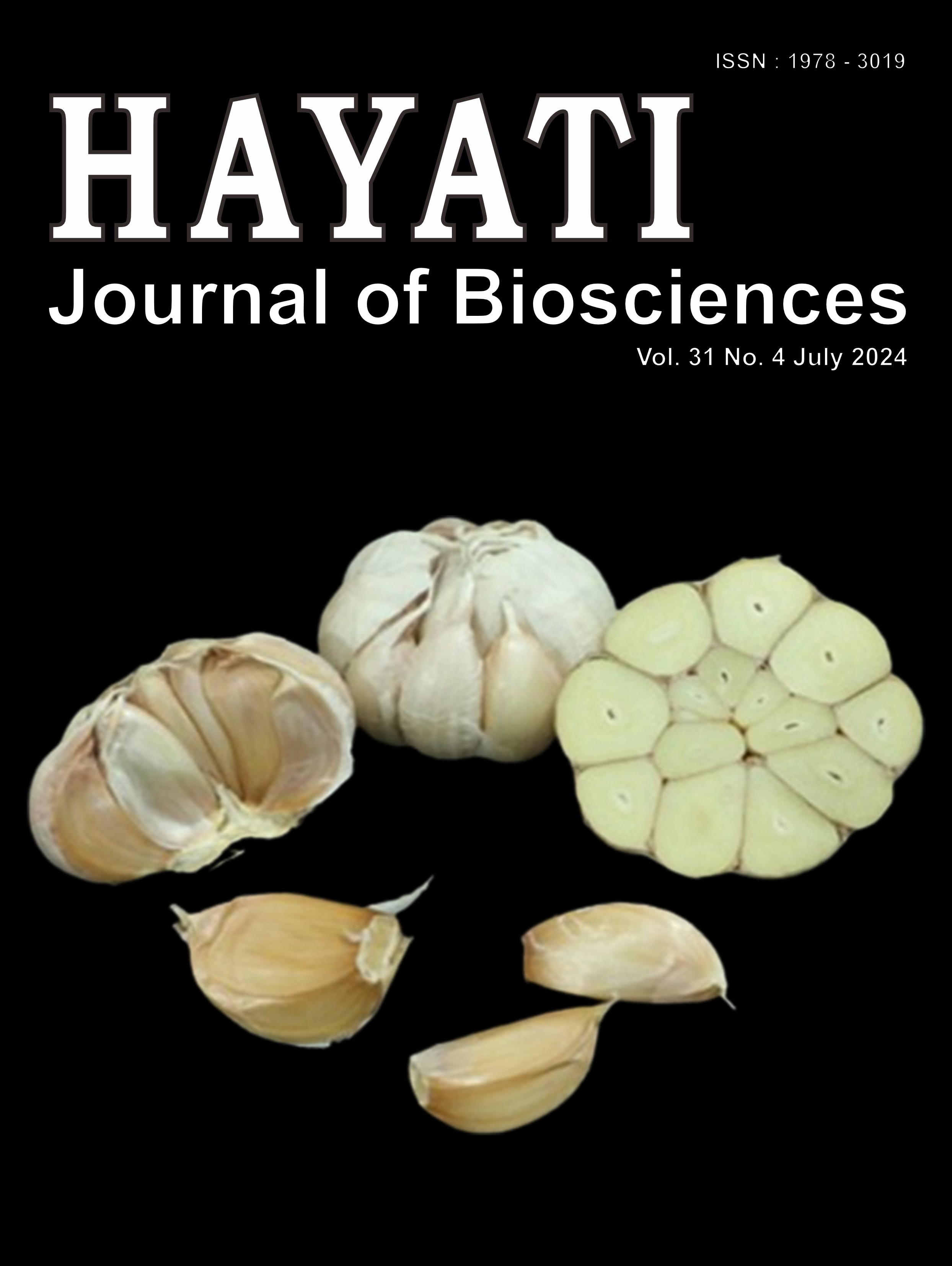Identification and Antibiotic Resistance Edwardsiella tarda from Clown Knifefish (Chitala chitala) in the Mekong Delta, Vietnam
Abstract
This investigation is intended to isolate, identify, and assess the pathogenicity of Edwardsiella tarda, which originated from diseased clown knifefish. A total of 43 isolates were obtained from infected fish samples in Hau Giang and Dong Thap provinces of the Mekong Delta, Vietnam. Two isolates of DT37 and HG41 were identified as E. tarda by morphological, biochemical, and 16S rRNA gene sequencing. Experimental challenge studies revealed that isolate DT37 leads to 83.33% at a 108 CFU/ml concentration after 60 hours. Meanwhile, in isolate HG41, mortality reached 100% within 48 hours post-injection at the highest concentration of 108 CFU/ml. The challenged clown knifefish exhibited gross signs of abnormal swimming, skin ulcerations, and petechial hemorrhages in the body. Internally, ascites with hemoperitoneum, light-colored nodules on the liver, hemorrhagic kidneys, and splenomegaly were also recorded. The LD50 of two isolates, DT37 and HG41, was 4.89 × 105 and 4.07 × 105 CFU/ml, respectively. The antibiogram result showed that most of the isolates were highly susceptible to ampicillin (65%), enrofloxacin (85%), florfenicol (100%), flumequine (90%), cefotaxime (80%), and trimethoprim and sulfamethoxazole (70%). However, the bacterial isolates were highly resistant to doxycycline (75%) and streptomycin (100%).
Downloads
Copyright (c) 2024 Tu Thanh Dung, Quach Van Cao Thi, Nguyen Bao Trung

This work is licensed under a Creative Commons Attribution-NonCommercial 4.0 International License.
HAYATI J Biosci is an open access journal and the article's license is CC-BY-NC. This license lets others distribute, remix, tweak, and build upon author's work, as long as they credit the original creation. Authors retain copyright and grant the journal/publisher non exclusive publishing rights with the work simultaneously licensed under a https://creativecommons.org/


















.png) IPB University
IPB University Department of Biology
Department of Biology The Indonesian Biological Society
The Indonesian Biological Society 

